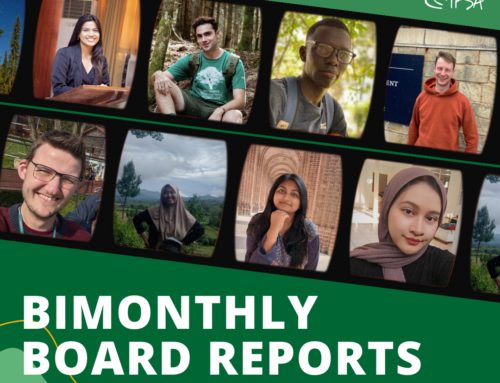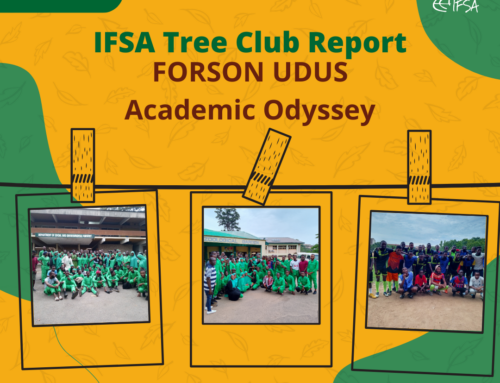Peat fire in Indonesia (Photo/Clever Trev)[/caption] Julian Fox from the UN Food and Agriculture Organization (UNFAO) explained the importance of peatland protection in an age of rapid climate change. Peatland fire is responsible for 25% of the carbon emission due to its immense carbon storage capacity. With only 3% of global coverage, peatlands are accounted for over 30% of the global soil carbon storage. Because of peatlands’ incredible water regulation and carbon sequestration capacity, they contribute to reducing greenhouse gas concentration, storing carbon, helping in adapting to climate change, promoting biodiversity, and providing livelihoods. However, when land use changes impacts peatland habitats, the carbon sequestration process can be easily reversed. 7 out of 1417 gigaton of global soil carbon storage has been released, and 25% of that was due to the loss of peatlands. Maintaining soil organic carbon (SOC) in carbon-rich soils, especially in peatlands, permafrost areas, and numerous other high SOC soils are one of the priorities. Fox suggested several ways in which nation governments can contribute to the effort of halting and reversing peatland loss:
- Integrating peatlands into climate-related planning and implementation processes
- Harmonising policies in land tenure, water management, and land use planning
- Include peatland related measurements in NFMS (National Forest Monitoring Systems) system
 Peatland hosts biodiversity (Photo/Scottish Wildlife Trust)[/caption]
Franziska Tanneberger from the Greifswald Mire Centre mentioned that although Europe only has ~0.6 million square kilometres of peatland coverage, the Europeans has long been utilising the peatland for livelihoods. The first scientific book on peat and peatland usage was written in the Netherlands in 1658. However, such large-scale usage actions resulted in a massive loss of peatland habitat in the Netherlands from 50% coverage to merely 7%. The bogs were drained for unemployment relief, youth employment campaign, and prisoner works. Such damages are irreversible, and so far less than 1% of the drained peatland habitat has been rewetted. Peatland conservation implies the preservation of its hydrology primarily. For better conservation, the entire peat body and the mineral catchment area have to be protected from drainage and water run-off. Lastly, Tanneberger noted that peatland protection is way more cost-effective than restoration, and as such, should provide a good incentive for national governments to promote active protection.
A representative from the German Ministry of Environment highlighted Germany’s efforts in combating peatland habitat loss. There are now 33 projects with 130 million Euros of funding dedicated to the protection and restoration of peatlands. UNEP encourages every single member country to explore the best option for the local environment and situation.
This side-event ended with a few concluding points, including:
Peatland hosts biodiversity (Photo/Scottish Wildlife Trust)[/caption]
Franziska Tanneberger from the Greifswald Mire Centre mentioned that although Europe only has ~0.6 million square kilometres of peatland coverage, the Europeans has long been utilising the peatland for livelihoods. The first scientific book on peat and peatland usage was written in the Netherlands in 1658. However, such large-scale usage actions resulted in a massive loss of peatland habitat in the Netherlands from 50% coverage to merely 7%. The bogs were drained for unemployment relief, youth employment campaign, and prisoner works. Such damages are irreversible, and so far less than 1% of the drained peatland habitat has been rewetted. Peatland conservation implies the preservation of its hydrology primarily. For better conservation, the entire peat body and the mineral catchment area have to be protected from drainage and water run-off. Lastly, Tanneberger noted that peatland protection is way more cost-effective than restoration, and as such, should provide a good incentive for national governments to promote active protection.
A representative from the German Ministry of Environment highlighted Germany’s efforts in combating peatland habitat loss. There are now 33 projects with 130 million Euros of funding dedicated to the protection and restoration of peatlands. UNEP encourages every single member country to explore the best option for the local environment and situation.
This side-event ended with a few concluding points, including:
- Catastrophes, like the Indonesian peatland fires in the ‘90 influence future political decisions
- Local communities and Indigenous knowledge are important in the protection, management, and restoration of peatlands
- Involving local stakeholders in the process is crucial
- Countries need to address the need for local economic development while conserving the peatland habitat and local environment in general.
 Dr Rosa María Román-Cuesta (left)[/caption]
Lastly, IFSA has had the privilege of interviewing Dr Rosa María Román-Cuesta, a consultant with the Centre of International Forestry Research (CIFOR) on the importance of wetlands and peatlands. The interview video will be posted in the coming days on IFSA communication channels.]]>
Dr Rosa María Román-Cuesta (left)[/caption]
Lastly, IFSA has had the privilege of interviewing Dr Rosa María Román-Cuesta, a consultant with the Centre of International Forestry Research (CIFOR) on the importance of wetlands and peatlands. The interview video will be posted in the coming days on IFSA communication channels.]]>




